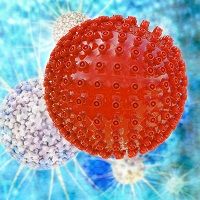Article
WHO Says More Than Half The World Has Herpes
Author(s):
More than 3.7 billion individuals below the age of 50 carry the herpes simplex virus type 1 (HSV-1/oral herpes), often catching it in childhood.

More than 3.7 billion individuals below the age of 50 carry the herpes simplex virus type 1 (HSV-1/oral herpes), often catching it in childhood.
The World Health Organization (WHO) published a study in the journal PLOS ONE reporting that not only does more than half the world’s population carry the HSV-1 virus — mainly transferred through mouth-to-mouth contact and resulting in cold sores – but that 417 million people also carry HSV-2, which is commonly known to cause genital herpes.
Researchers discovered that as rich countries improve their hygiene thereby lowering rates of HSV-1 infections in childhood, young adults are more at risk for contracting it through oral sex.
Naturally, education is key. Marleen Temmerman, MD, director of WHO’s Department of Reproductive Health and Research, said in a statement, “Access to education and information on both types of herpes and sexually transmitted infections is critical to protect young people’s health before they become sexually active. The new estimates highlight the crucial need for countries to improve data collection for both HSV types and sexually transmitted infections in general.”
Classified by region, the most HSV-1 infections were found in Africa:
Estimates for HSV-1 prevalence by region among people aged 0-49 in 2012
· Americas: 178 million women (49%), 142 million men (39%)
· Africa: 350 million women (87%), 355 million men (87%)
· Eastern Mediterranean: 188 million women (75%), 202 million men (75%)
· Europe: 207 million women (69%), 187 million men (61%)
· Southeast Asia: 432 million women (59%), 458 million men (58%)
· Western Pacific: 488 million women (74%), 521 million men (73%)
Estimates of new HSV-1 infections among people aged 0-49 in 2012
· Americas: 6 million women, 5 million men
· Africa: 17 million women, 18 million men
· Eastern Mediterranean: 6 million women, 7 million men
· Europe: 5 million women, 5 million men
· Southeast Asia: 13 million women, 14 million men
· Western Pacific: 11 million women, 12 million men\
While herpes viruses are not traditionally considered fatal, contracting either one can heavily influence one’s mental well-being, relationships, and physical comfort.
According to the report, the lack of a permanent and curative treatment for both herpes types have paved the way for a race for the WHO and partners to focus on phase-1 and phase-2 trials to develop HSV vaccines and topical microbicides in handling infection prevention.



